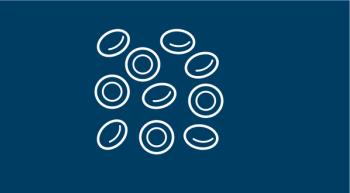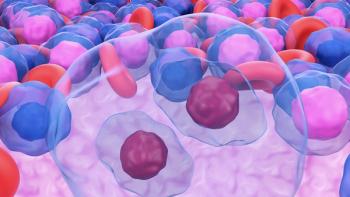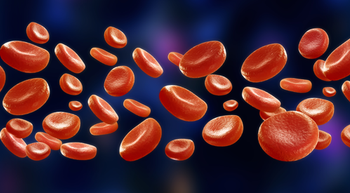
Genomic Alterations in Primary Breast Cancer May Increase Risk of Secondary Uterine Cancer in Patients Receiving Tamoxifen
PI3K-pathway mutations may predict an increased risk of secondary uterine cancer in patients receiving tamoxifen to treat primary breast cancer.
PI3K-pathway activation may drive the development of secondary uterine cancer in patients who have primary breast cancer and receive treatment with tamoxifen, according to findings published during the 2021 San Antonio Breast Cancer Symposium.1
To assess the mutational landscape of tamoxifen-associated uterine cancer, investigators performed whole genome sequencing on 21 samples from the TAMARISK trial, which examined the occurrence of secondary disease among those treated with tamoxifen.2 The results were compared with de novo uterine cancers not associated with tamoxifen treatment gathered utilizing The Cancer Genome Atlas. Findings indicated that genomic alterations in tamoxifen-associated uterine cancer and de novo uterine cancers developed at a similar rate.
“We want to make sure people understand that tamoxifen is safe to use, and tamoxifen-associated uterine cancer is infrequent,” study author Rinath Jeselsohn, MD, an assistant professor of medicine and medical oncology at Dana-Farber Cancer Institute and Harvard Medical School, said. “We wanted to understand the mechanisms behind this uncommon event to potentially help patients who are at an increased risk of uterine cancer due to other additional risk factors.”
Investigators noted that patients who developed tamoxifen-associated uterine cancer had significantly decreased mutations in the PI3K signaling pathway, which is known to drive the development of uterine cancer. Moreover, PIK3CA mutations were identified in 14% of patients with tamoxifen-associated uterine cancer compared with 48% of those with de novo uterine cancer. Additionally, PIK3R1 mutations were observed in 31% of patients with de novo disease compared with no patients with tamoxifen-associated uterine cancer.
Data from the trial were verified utilizing digital droplet polymerase chain reaction (PCR) to assess PIK3CA hotspot mutations utilizing samples taken from the TAMARISK trial (n = 40), which were then compared with a cohort of samples taken from patients with de novo uterine cancers from the American Association for Cancer Research Project GENIE. Similarly, a decreased incidence in identification of PIK3CA mutations was observed, specifically 7.5% in the tamoxifen-associated uterine cancer arm and 21% in the de novo arm.
To better understand the mechanisms responsible for decreased PI3K mutations among those with tamoxifen-associated uterine cancers, tissue taken from mice treated with tamoxifen were examined. Findings from the assessment highlighted an increased Ki-67 expression. RNA sequencing also highlighted notable pathway activation based on stains for phosphorylated proteins in the PI3K pathway. The findings highlight a significant rise in PI3K pathway activation in mice treated with tamoxifen vs the control group.
“The model for how secondary cancers occur after chemotherapy, for example, is that cells acquire driver mutations that lead to clonal outgrowth,” presenter Kirsten Kübler, MD, PhD, an associate scientist at the Broad Institute of MIT and Harvard, research staff at Massachusetts General Hospital, and an instructor at Harvard Medical School, said in a press release. “Our results extend that view in the sense that a drug could directly activate a signaling pathway instead of creating mutations that activate the pathway.”
To decrease the risk of increased pathway activation due to treatment with tamoxifen, investigators treated mice with alpelisib (Piqray) in combination with tamoxifen. The regimen appeared to be successful in decreasing Ki-67 staining and markers of PI3K signaling.
“For women taking tamoxifen for breast cancer, there may be a possibility of using a PI3K inhibitor for those who are at an increased risk of uterine cancer, as a prevention strategy,” Jeselsohn concluded.
References
- Tamoxifen may boost PI3K signaling to increase uterine cancer risk in patients with breast cancer. News cancer. American Association for Cancer Research. December 7, 2021. Accessed December 7, 2021. https://bit.ly/3Ip1UES
- Kübler K, et al. Tamoxifen instigates uterine cancer development by activating PI3K signaling and supersedes PIK3CA driver mutations. Presented at: 2021 San Antonio Breast Cancer Symposium; December 7-10, 2021; San Antonio, TX. Abstract GS2-09.
Newsletter
Knowledge is power. Don’t miss the most recent breakthroughs in cancer care.

















































































